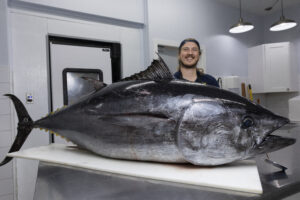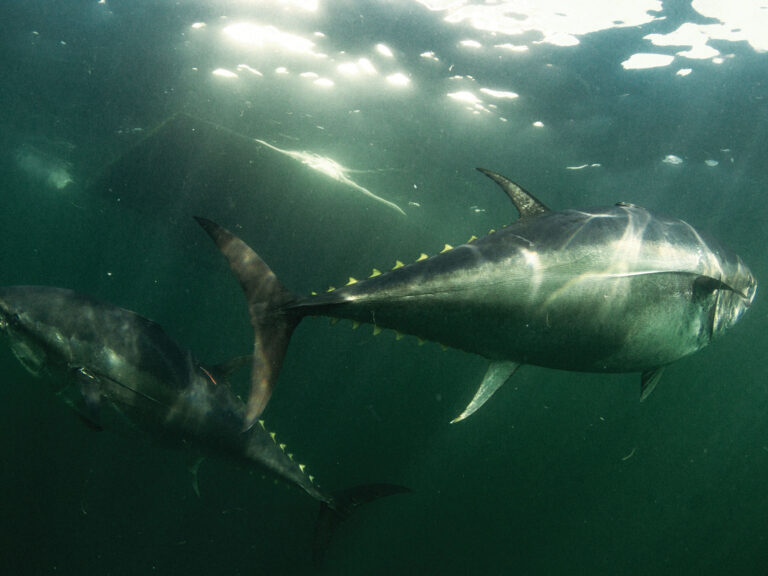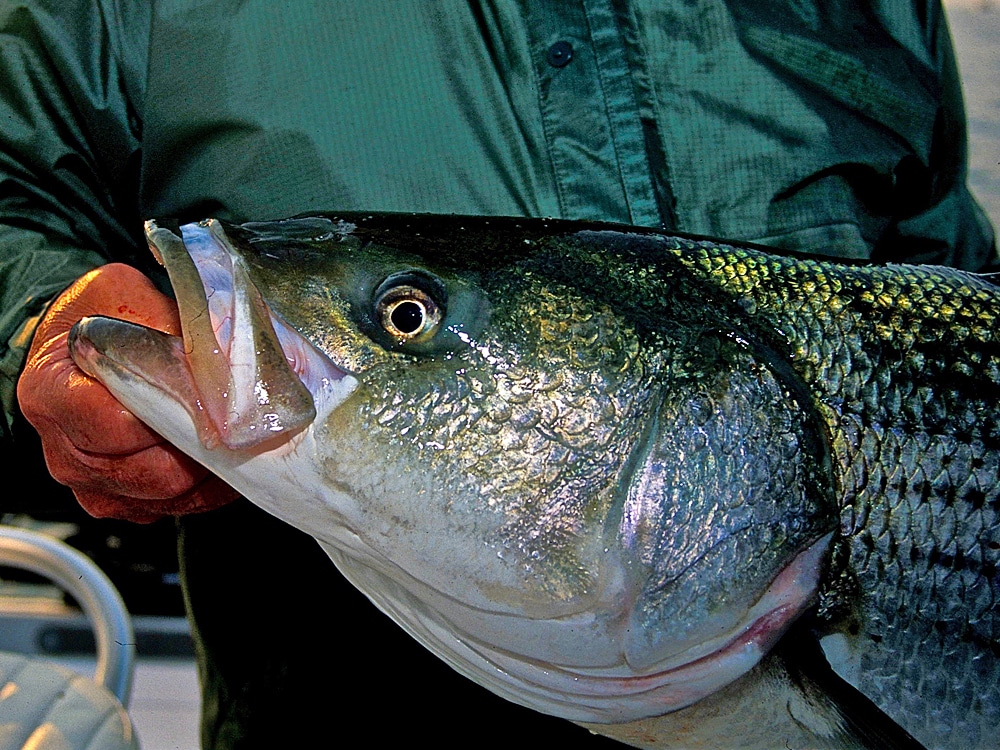
Despite local and regional exceptions, it’s safe to say that striped bass are the Northeast coast angler’s most popular target. You can catch them in bays, inlets, the surf, or even up coastal rivers. I’ve chased them from Maine to Georgia, tossing flies at them for the past several decades. Both my successes and failures when fly-fishing for striped bass have taught me many things about these magnificent fish.
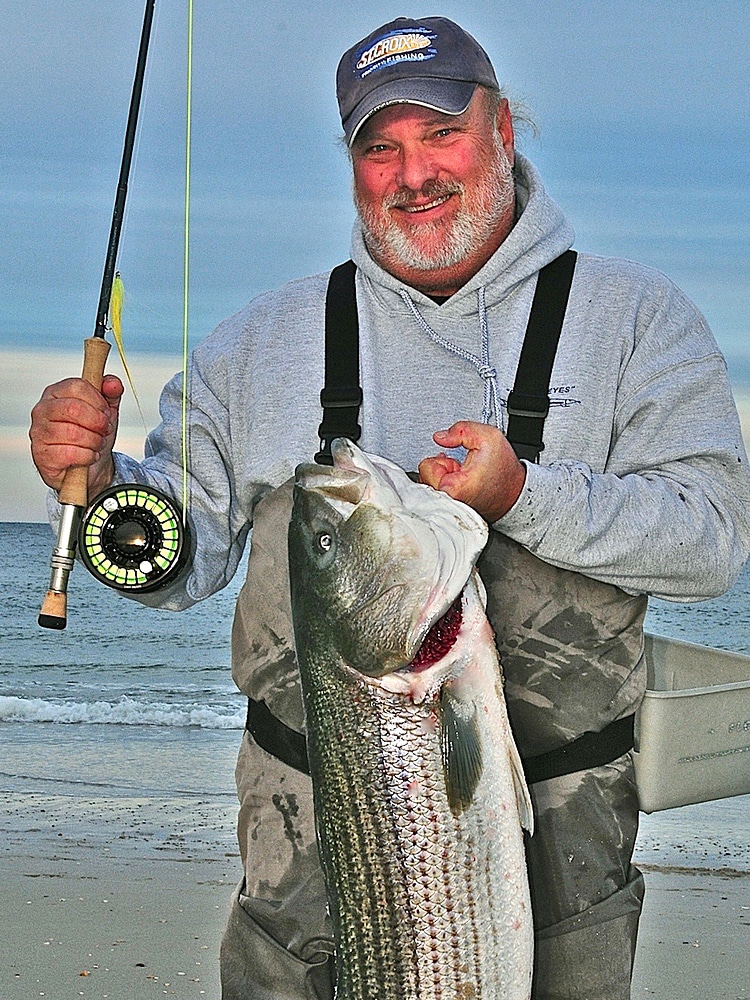
Fly Tackle for Trophy Stripers
When it comes to fly tackle for large striped bass, I recall Lou Tabory’s sage advice: “Most fly anglers lose the largest fish because they gear up to catch smaller, school-sized fish.” Their rods, reels, and leaders too often aren’t up to the task. So if you specifically seek trophy stripers, think big, think strong. Not that fish aren’t sometimes caught on lighter tackle, but consider 10, 11, even 12-weight rods when you target the largest fish. Your reel needn’t cost the price of a home mortgage, but it should definitely start up and give up line smoothly, and hold 150 yards of stout dacron or gel spun backing.
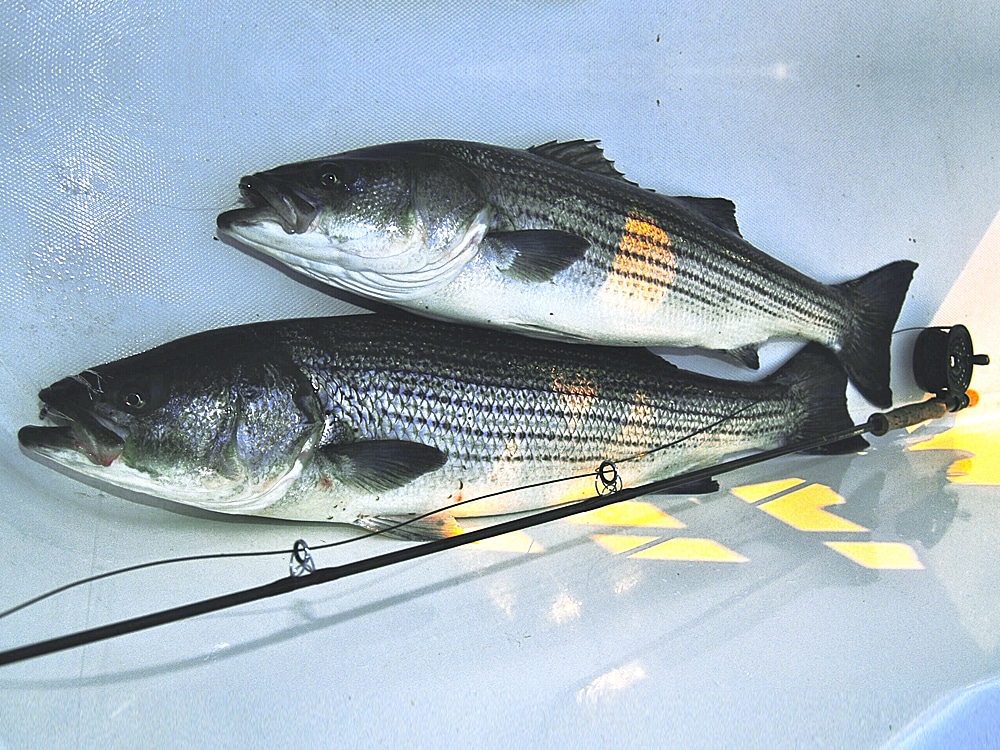
Best Fly Lines for Striped Bass
Also carry several fly lines to meet the various conditions. For tossing large poppers and shallow swimming flies, or to fish shallow bays and flats, a floating line with a steeper saltwater front taper fits the bill. For me, however, that’s my least favorite line when I expect to encounter above average fish. Most big striped bass are taken deeper, so I generally rely on fast-sinking, integrated heads of 400 or 500 grains. Wave action affects such subsurface lines less, they also help me keep more direct contact with my flies, and afford positive hook setting. For the surf, I like an intermediate line, as its slow sink rate keeps my flies from planing on the surface in the turbulent water.
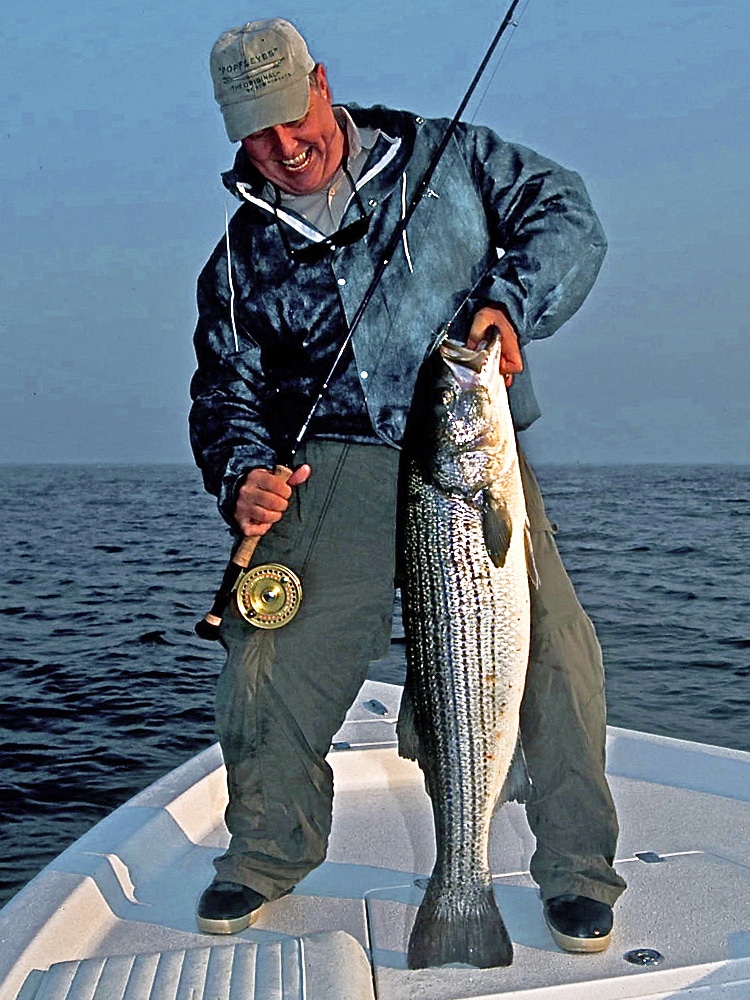
Recommended Striper Leaders
Since fewer knots offer less chance for failure, I like simple two- or three-piece leaders of about 7-8’, usually tipped out at about 20 pounds. A lot of taper isn’t required. A heavy shocker on the front end can be vital around rocks and jetties. I once lost a huge fish over a rocky reef near Watch Hill, Rhode Island while fishing with Capt. Steve Bellefleur. When he reported my failure to another guide, the question came back, “Was he using a shock tippet?” Steve simply said, “He is now.” I still haven’t lived that one down.
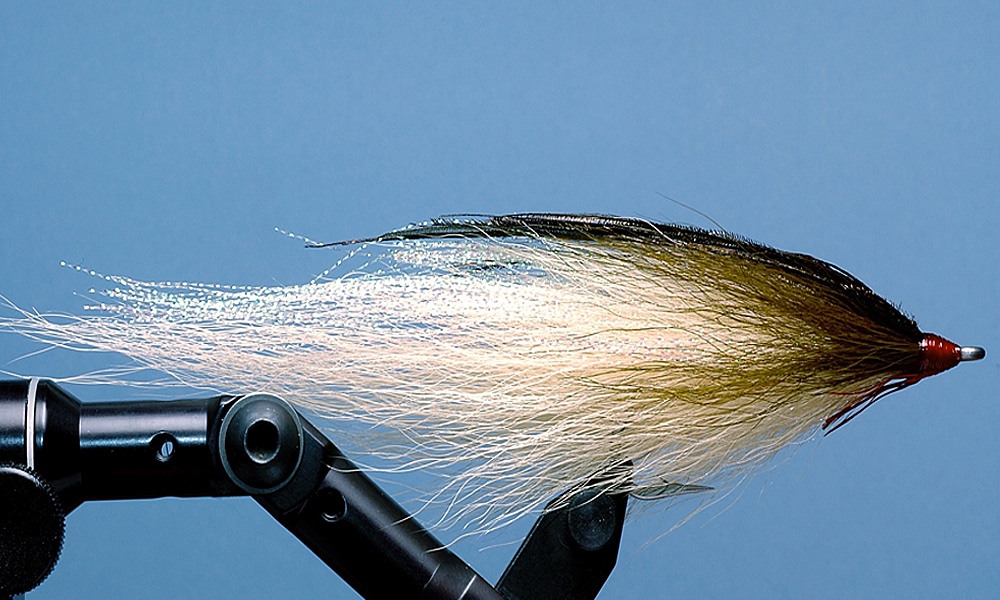
Best Flies for Striped Bass
While streamers and poppers have long been the mainstay when fly-fishing for striped bass, crab, worm, shrimp, and even lobster imitations have gained attention in recent years as some of the best striped bass flies. However, if you focus on larger fish, it makes sense to use flies replicating the baits that striped bass favor, like herring, menhaden, squid, and eels. And remember, the hook is your only point of contact with the fish, so make sure your flies for striped bass are tied on strong, with sharp hooks.
As for patterns, Bob Popovics’s Bucktail Deceivers and Beast flies are great choices. I also have a preference for flies with built-in swimming motion, like Bob’s Pop Lips, and Blane Chocklett’s Game Changers. When fishing flies for striped bass, mix and alternate retrieves, fast and slow, one-hand and two-hand, steady and erratic. And for when you’re not on a fly rod, check out these striped bass lures for proven results.
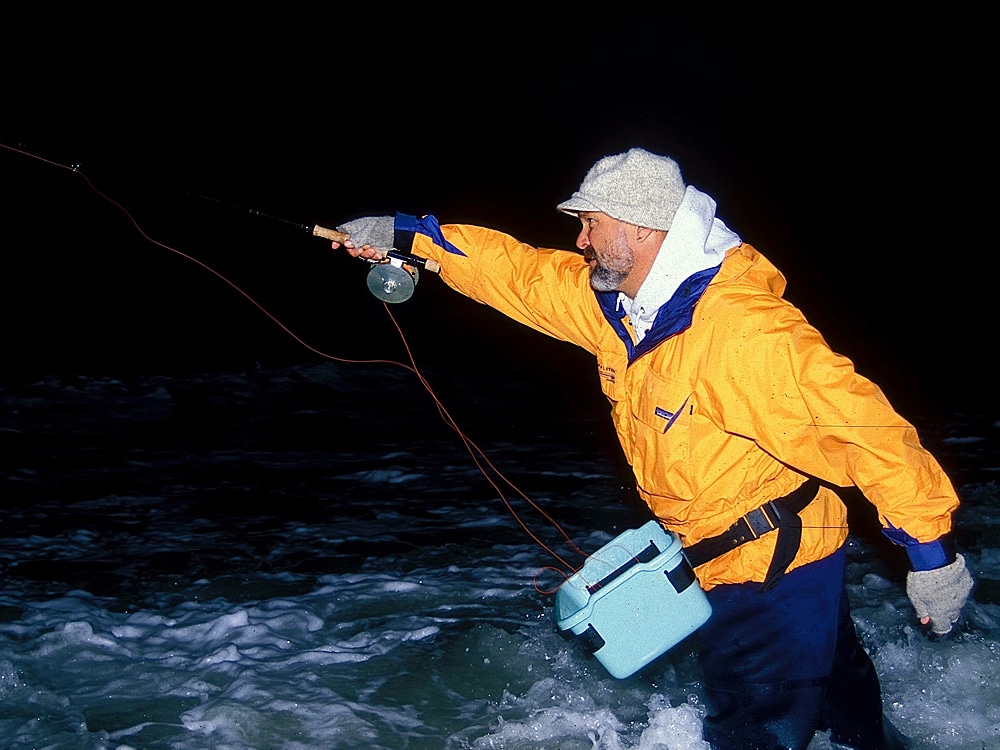
Key Factors For Top Striper Action
Although anglers incessantly debate the effects of water temperature, wind or wave action, and moon phase on big Northeast striped bass, one point everyone agrees on is the importance of moving water, either a strong rising or falling tide, so it pays to consult tackle shops and guides for the local preferences. I generally favor night fishing for striped bass around the new moon, the darkest times of the month.
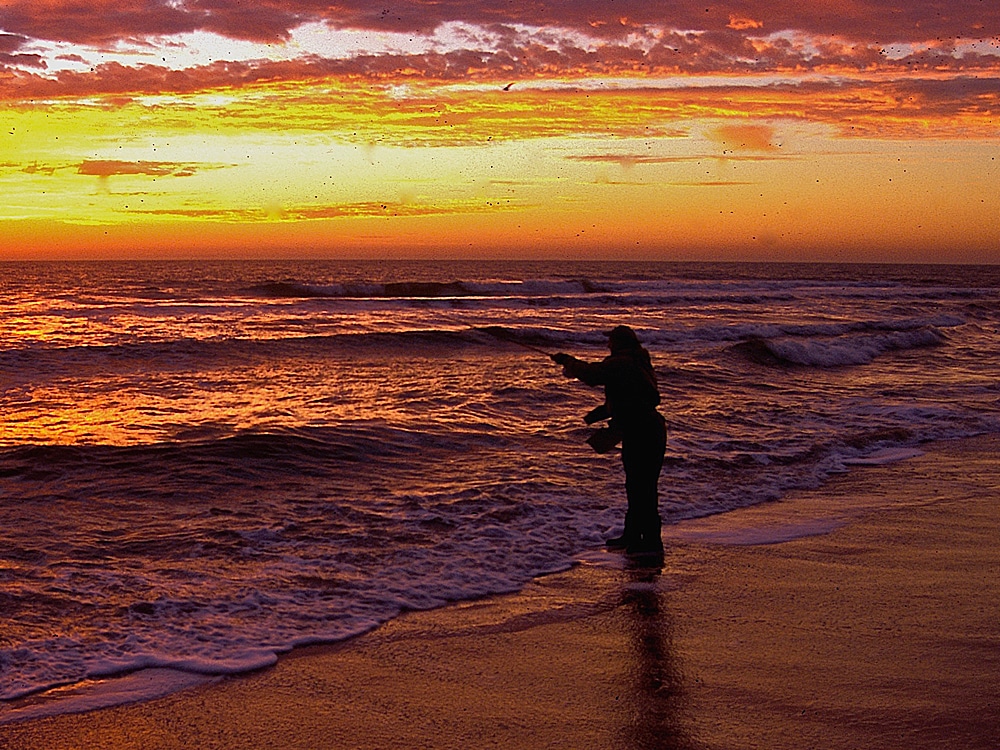
Once the mullet start to migrate along the New Jersey surf in mid-September, I look forward to fishing daybreak, when the bait draws bass close to shore. But don’t hesitate to take advantage of any opportunity to fish when the bass are in season and in the vicinity. Remember that they gravitate toward rocks, so concentrate your efforts on structure, when possible, and keep in mind that wave turbulence and big current rips also serve as structure, allowing stripers to ambush baitfish.
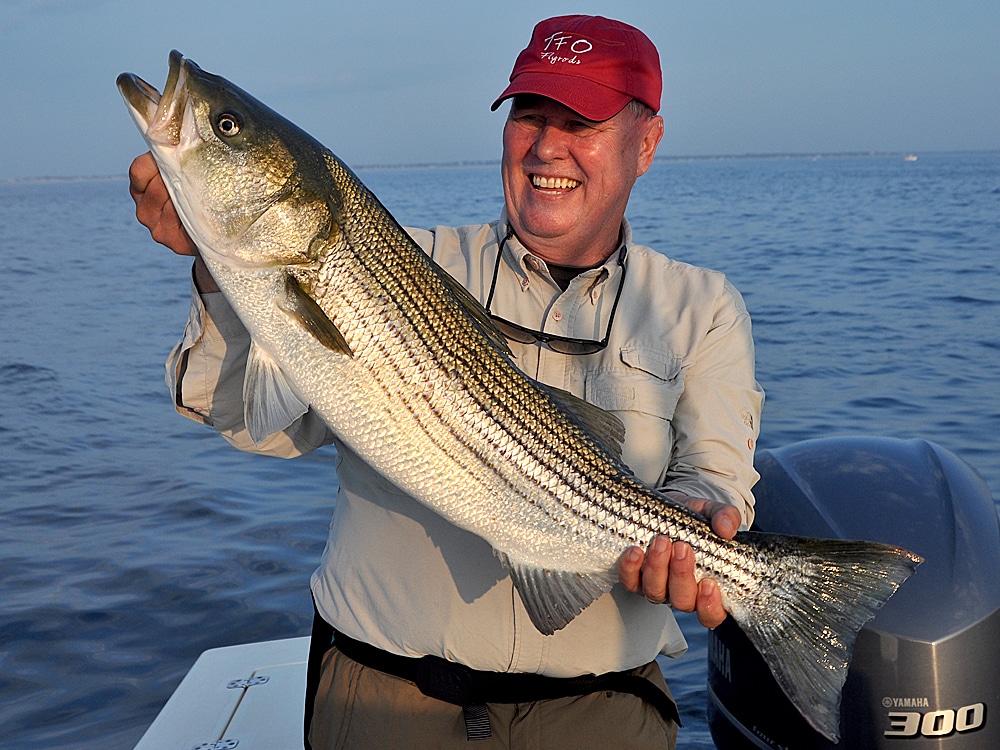
Northeast Striper Hot Spots
As for venues, some of my personal favorites are Cape Cod, including waters around the islands of Nantucket and Martha’s Vineyard, the rocks around Cuttyhunk and the Elizabeth Islands, Montauk in the fall, Sandy Hook and Cape May, New Jersey, and the mouth of Chesapeake Bay in the vicinity of the Bay Bridge-Tunnel, particularly in the winter months. Of course, these are only a few of the many places where you can connect with trophy stripers. And unless you are thoroughly familiar with the waters you want to fish, book a good guide. That’s what I do.

